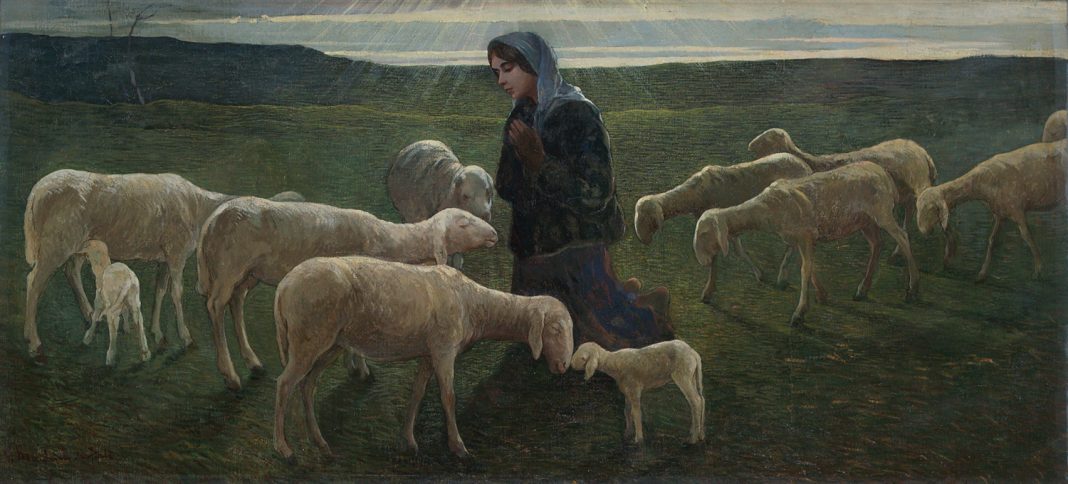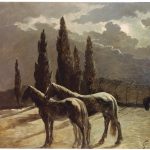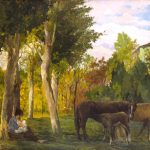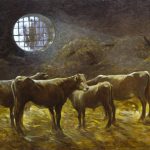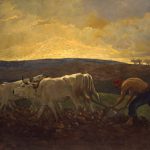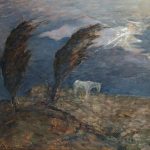Create an account
Welcome! Register for an account
La password verrà inviata via email.
Recupero della password
Recupera la tua password
La password verrà inviata via email.
-
- container colonna1
- Categorie
- #iorestoacasa
- Agenda
- Archeologia
- Architettura
- Arte antica
- Arte contemporanea
- Arte moderna
- Arti performative
- Attualità
- Bandi e concorsi
- Beni culturali
- Cinema
- Contest
- Danza
- Design
- Diritto
- Eventi
- Fiere e manifestazioni
- Film e serie tv
- Formazione
- Fotografia
- Libri ed editoria
- Mercato
- MIC Ministero della Cultura
- Moda
- Musei
- Musica
- Opening
- Personaggi
- Politica e opinioni
- Street Art
- Teatro
- Viaggi
- Categorie
- container colonna2
- container colonna1
Giovanni Marchini – Life Suspended Between Chaos and Order
A selection of remarkable artworks by Giovanni Marchini (1877 – 1946) painted between 1903 and 1945. He was one of the most representative exponents of the Symbolism, with artists as Arnold Böcklin, Odilon Redon, Giovanni Segantini.
Comunicato stampa
Segnala l'evento
A selection of remarkable artworks by Giovanni Marchini (1877 - 1946) painted between 1903 and 1945. He was one of the most representative exponents of the Symbolism, with artists as Arnold Böcklin, Odilon Redon, Giovanni Segantini. His Symbolist masterpiece is "Il Cavallo Narratore", a work openly inspired by a story by Lev Tolstoy.
His works focus in particular on the theme of man's relationship with nature, He also had an eye on the world of the poor and the last.
Born in Forlì, Giovanni Marchini moved to Argentina as a child in 1890, following his family to Buenos Aires. He returned to Italy in 1896. After learning the rudiments of drawing and painting in South America, he returned home and continued his career, studying fine arts first in Florence, where he taught Giovanni Fattori, then in Venice, and finally at the Academy of Fine Arts in Rome (thanks to a scholarship offered to him by the municipality of Forlì).
Unlike Odilon Redon, he did not have to wait until his high school graduation to get his first acclaim. In 1903, he exhibited the painting " Il Cavallo Narratore" in Milan, obtaining a fair success, also thanks to his literary inspiration. He was inspired by the story "Cholstomér" by Leo Tolstoy. It is considered the best painting of his Symbolist period. The following year, in Naples, he was able to appreciate the works of the painters of the Posillipo school.
After having painted frescoes in palaces or churches (in the Paganelli Rivalta palace in Terra del Sole and in the Church of San Francesco in Forlì), Marchini volunteered for the First World War. He returned to civil life and painted several frescoes, such as in Villa Masini and for Villa Dettoni in San Pietro in Cariano (in 1928), for the Cathedral of St. Peter the Apostle of Senigallia, near Verona (in 1931).
His works focus in particular on the theme of man's relationship with nature, especially in landscapes. He also had an eye on the world of the poor and the last. He was a painter, therefore a symbolist, but strangely enough in this theme contaminated by verist influence. He presented his paintings at the Permanent Exhibition in Milan (in 1922) and the Biennial Exhibition in Rome (in 1925). He produced many other works, which, however, have been lost or damaged.
His works focus in particular on the theme of man's relationship with nature, He also had an eye on the world of the poor and the last.
Born in Forlì, Giovanni Marchini moved to Argentina as a child in 1890, following his family to Buenos Aires. He returned to Italy in 1896. After learning the rudiments of drawing and painting in South America, he returned home and continued his career, studying fine arts first in Florence, where he taught Giovanni Fattori, then in Venice, and finally at the Academy of Fine Arts in Rome (thanks to a scholarship offered to him by the municipality of Forlì).
Unlike Odilon Redon, he did not have to wait until his high school graduation to get his first acclaim. In 1903, he exhibited the painting " Il Cavallo Narratore" in Milan, obtaining a fair success, also thanks to his literary inspiration. He was inspired by the story "Cholstomér" by Leo Tolstoy. It is considered the best painting of his Symbolist period. The following year, in Naples, he was able to appreciate the works of the painters of the Posillipo school.
After having painted frescoes in palaces or churches (in the Paganelli Rivalta palace in Terra del Sole and in the Church of San Francesco in Forlì), Marchini volunteered for the First World War. He returned to civil life and painted several frescoes, such as in Villa Masini and for Villa Dettoni in San Pietro in Cariano (in 1928), for the Cathedral of St. Peter the Apostle of Senigallia, near Verona (in 1931).
His works focus in particular on the theme of man's relationship with nature, especially in landscapes. He also had an eye on the world of the poor and the last. He was a painter, therefore a symbolist, but strangely enough in this theme contaminated by verist influence. He presented his paintings at the Permanent Exhibition in Milan (in 1922) and the Biennial Exhibition in Rome (in 1925). He produced many other works, which, however, have been lost or damaged.
25
giugno 2020
Giovanni Marchini – Life Suspended Between Chaos and Order
Dal 25 giugno al 23 agosto 2020
arte contemporanea
Evento online
Link di partecipazione
Sito web
Autore
Curatore





